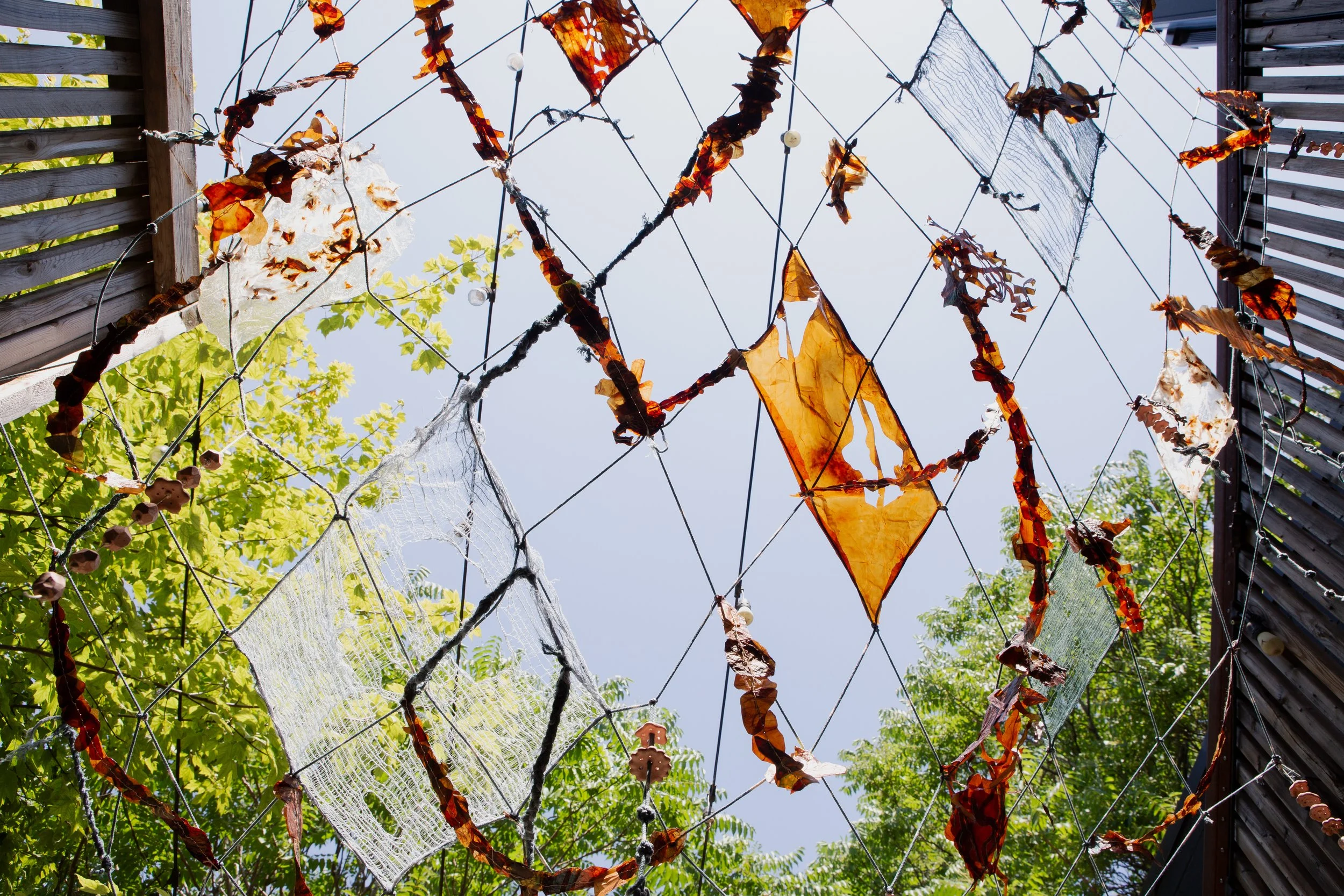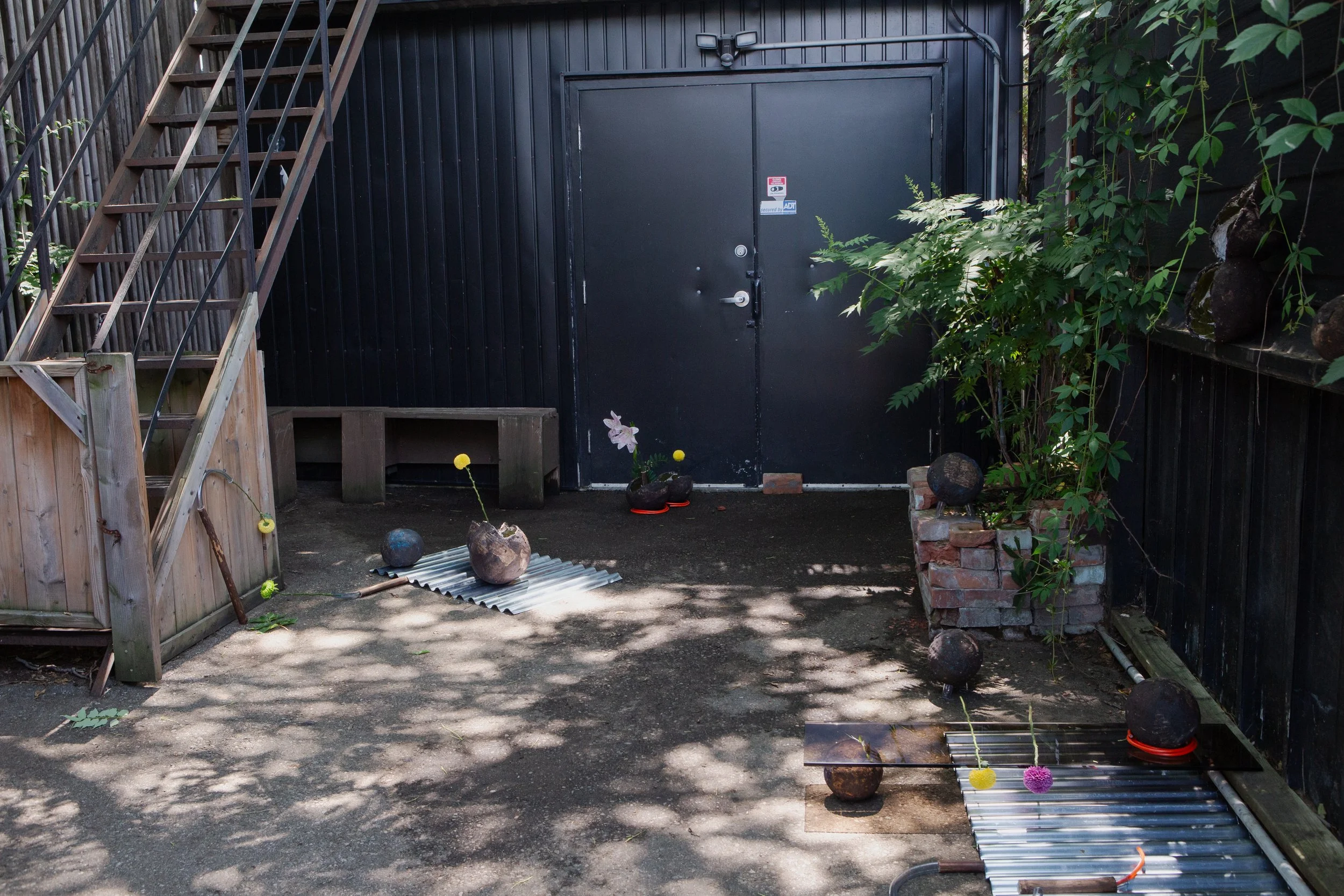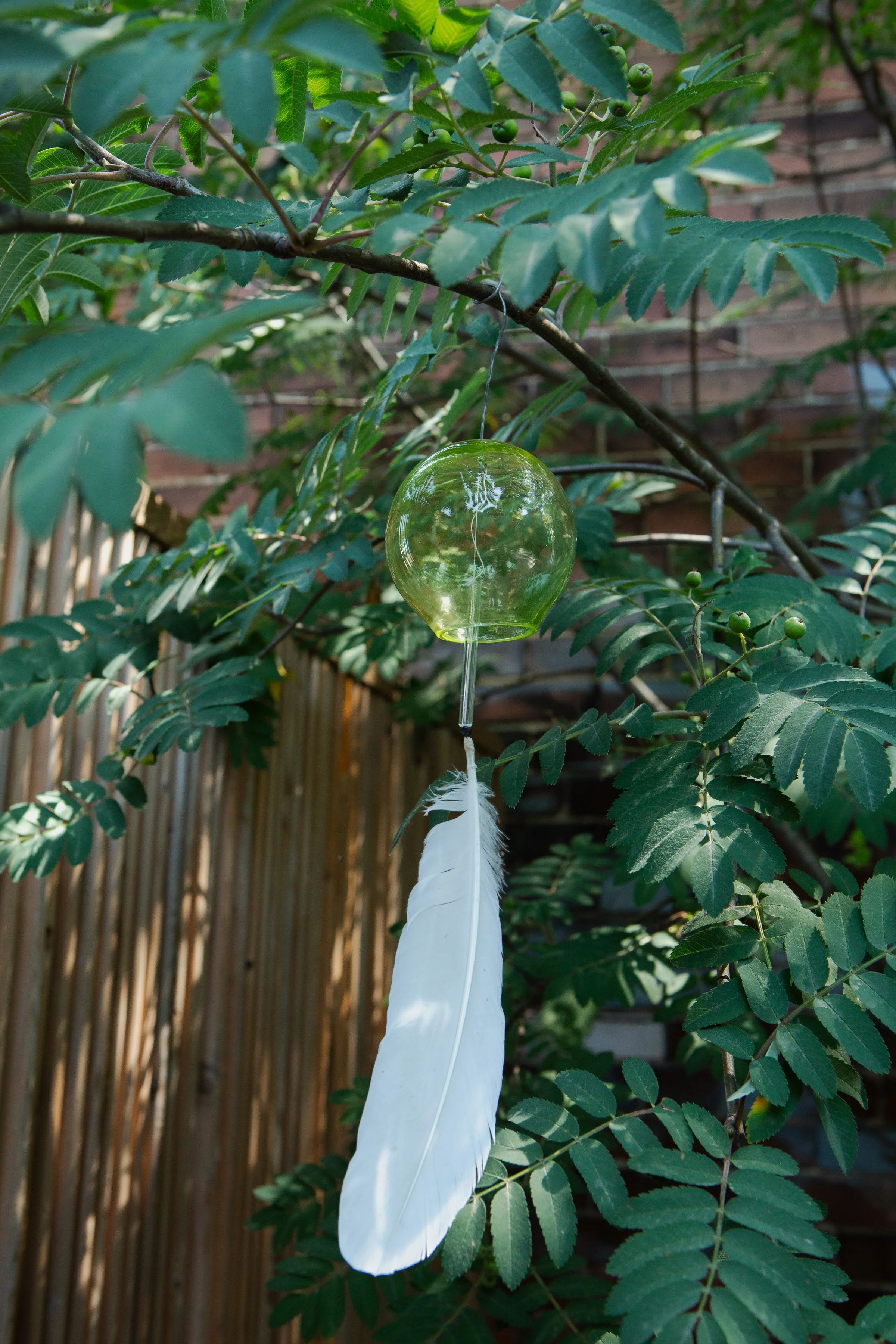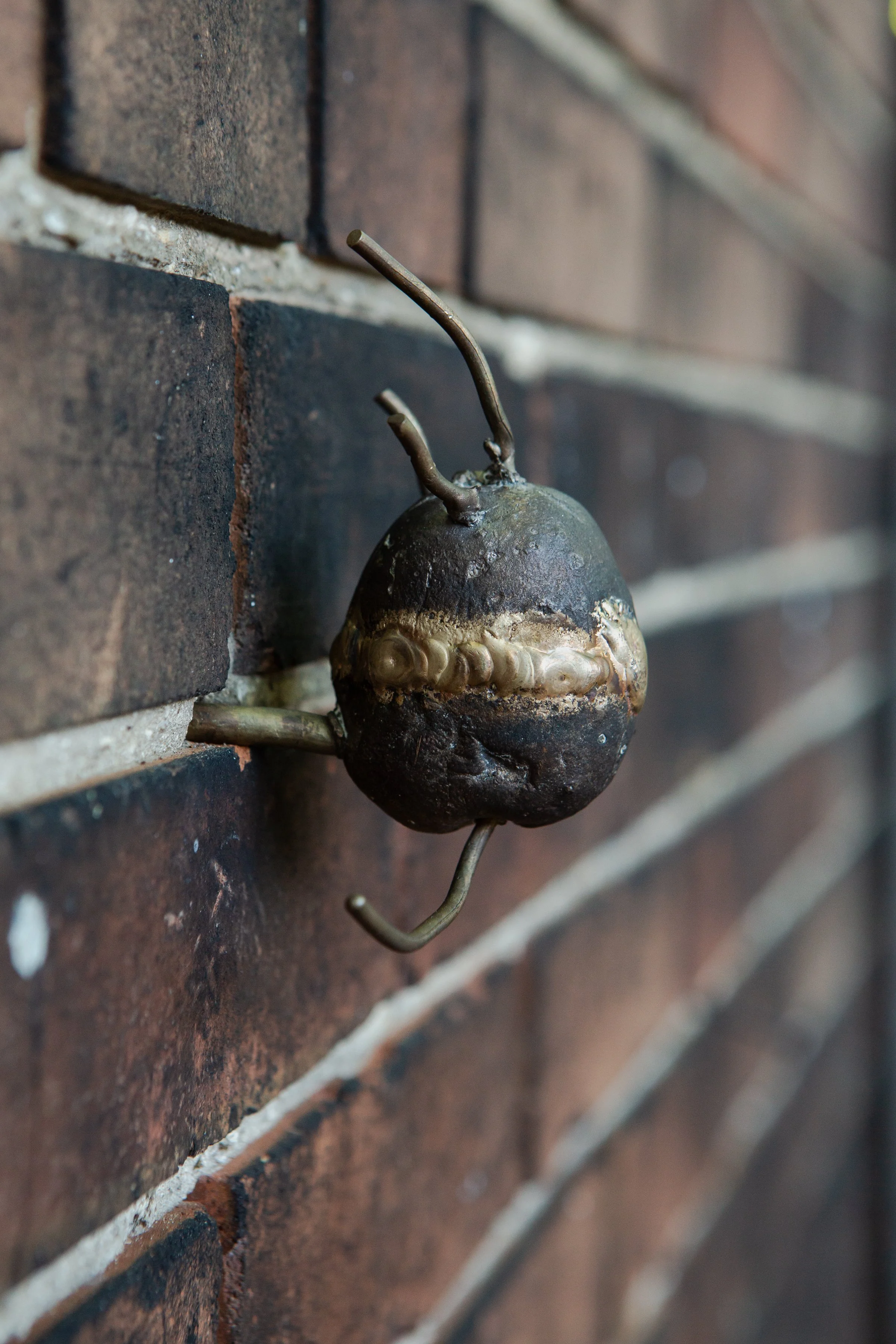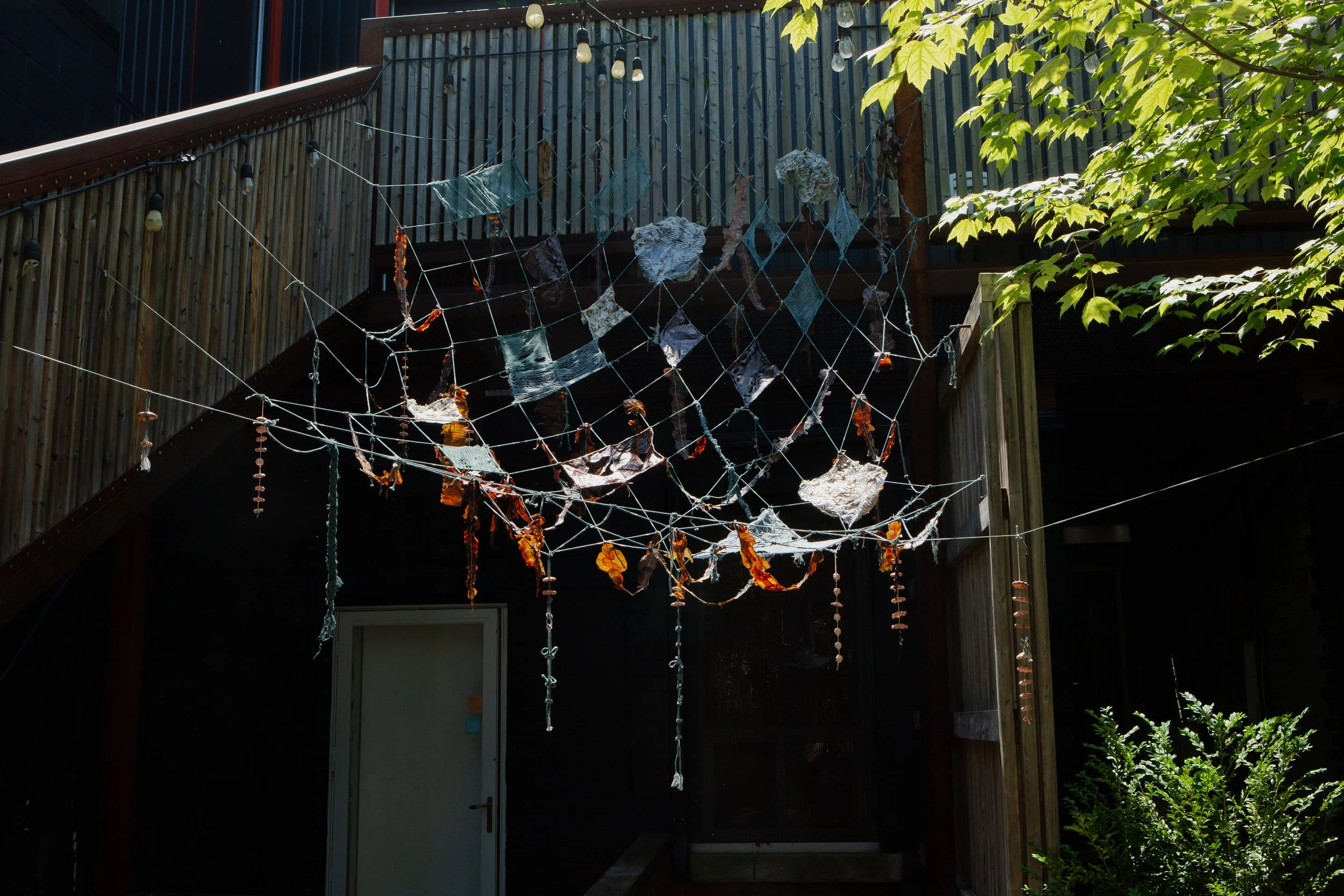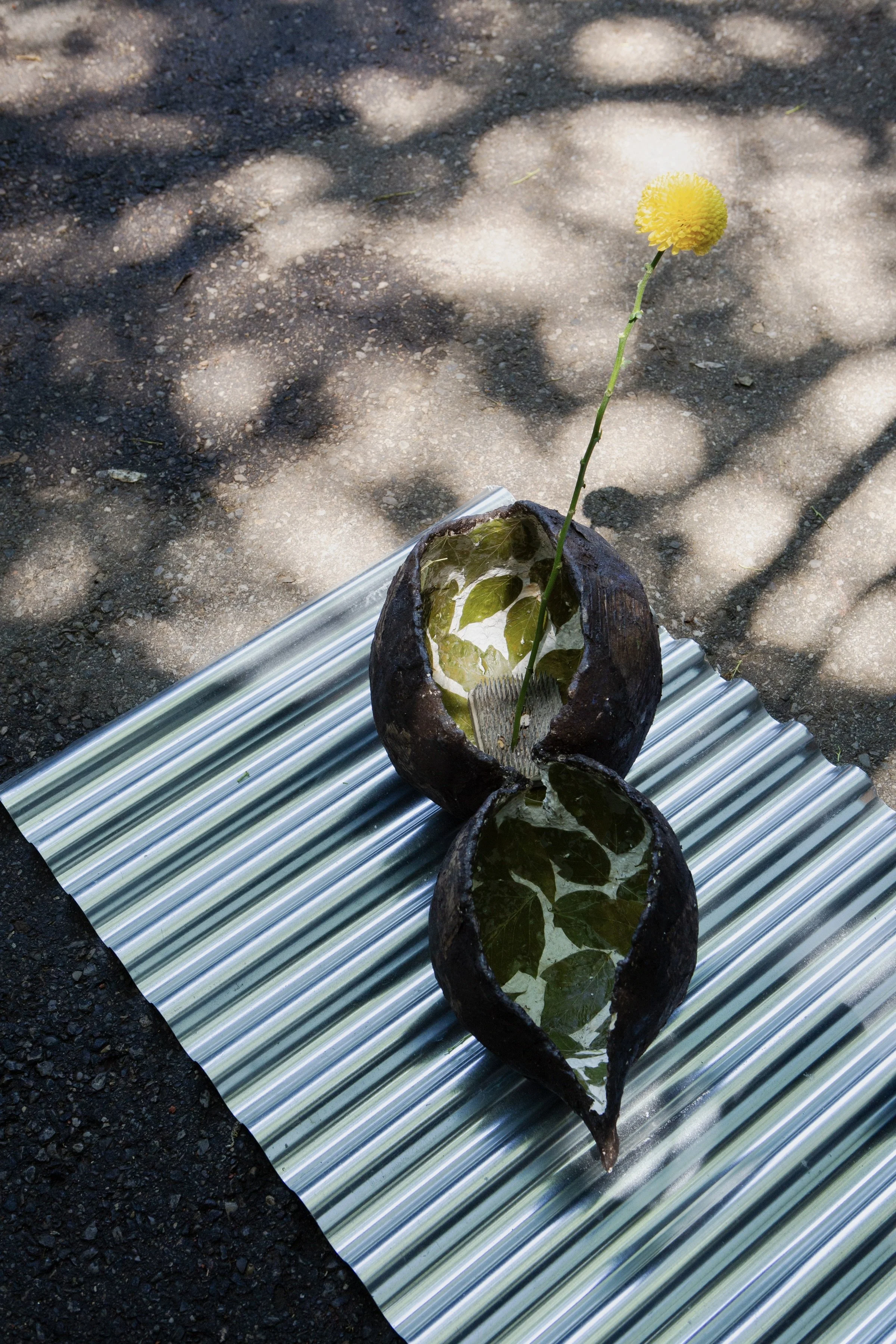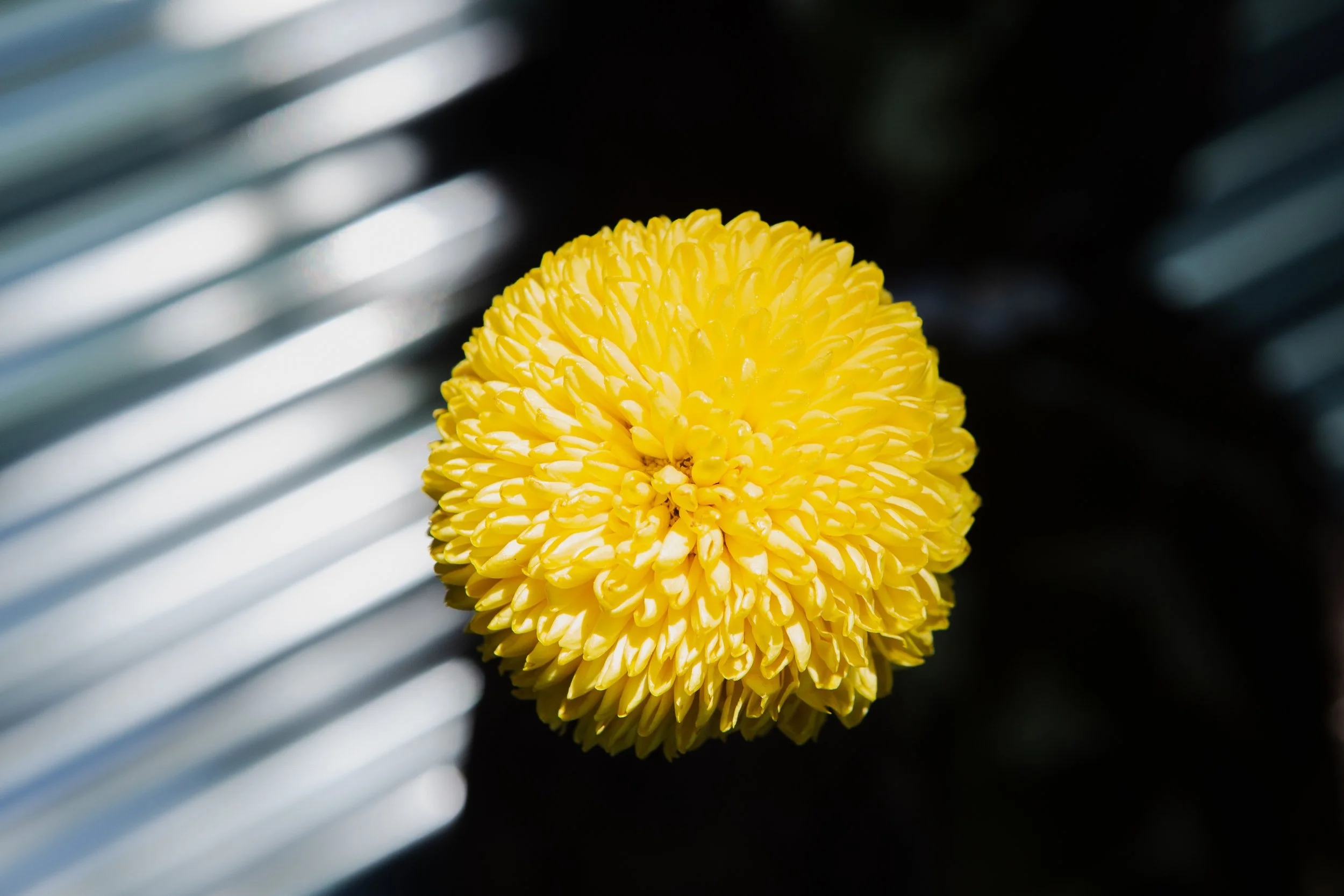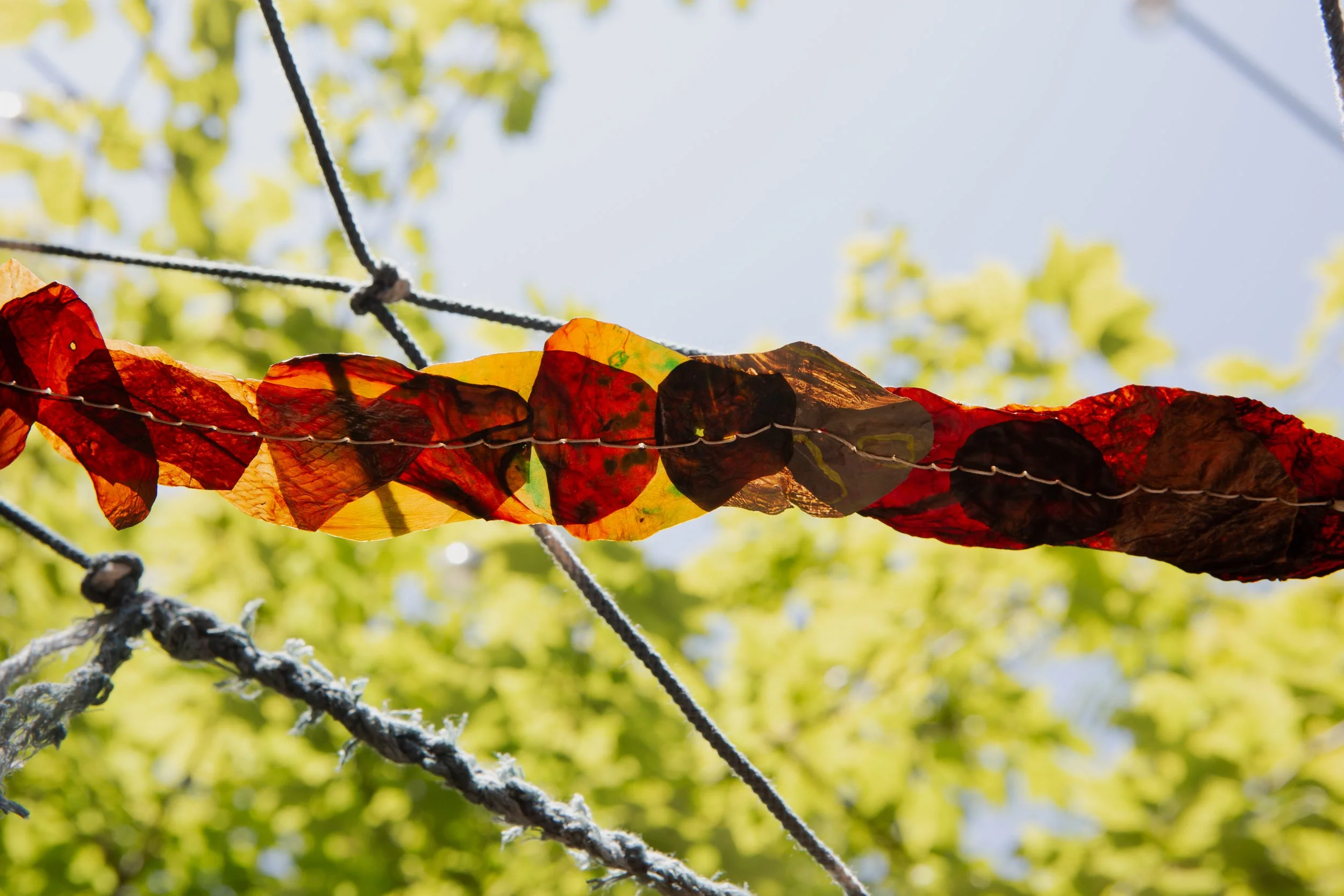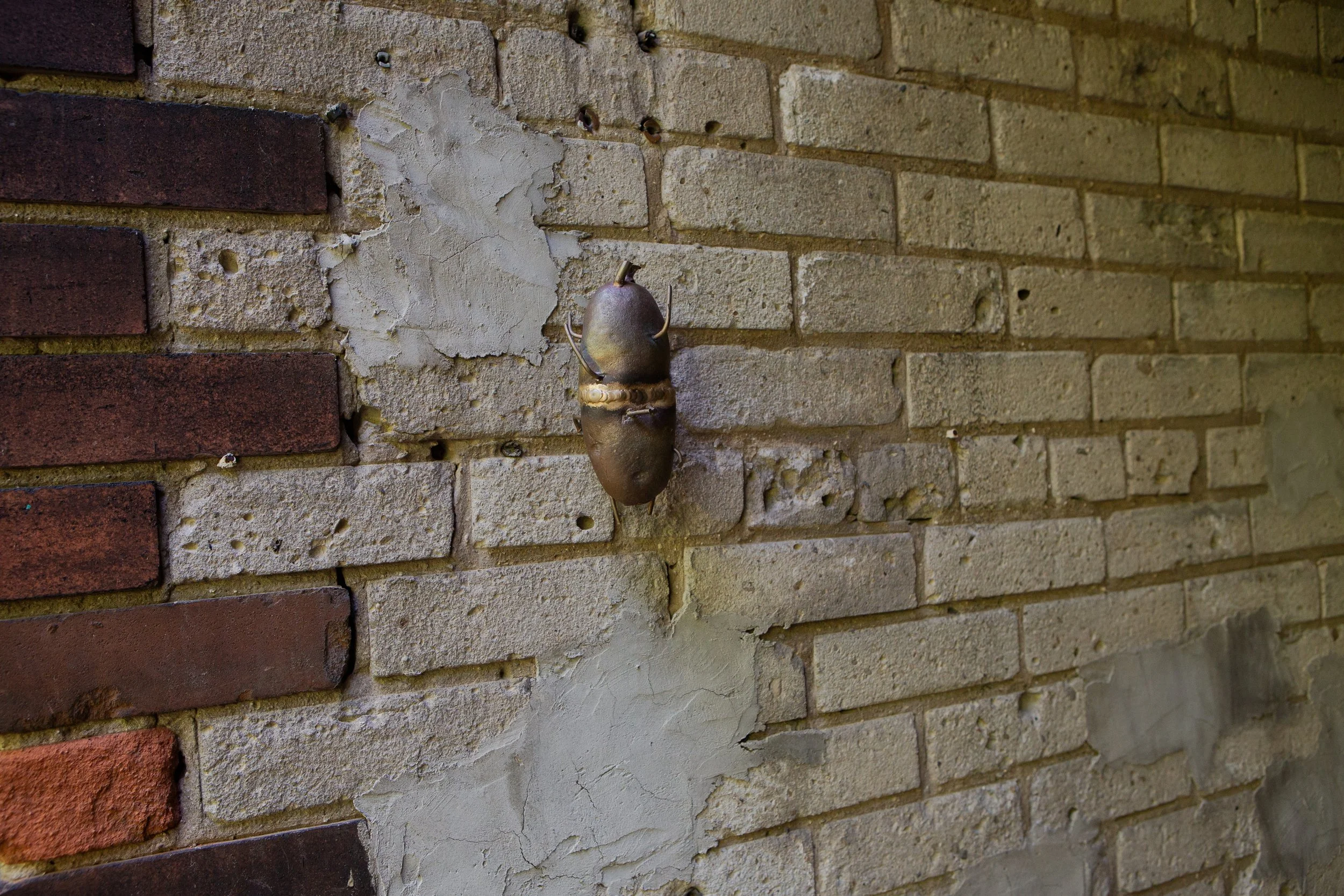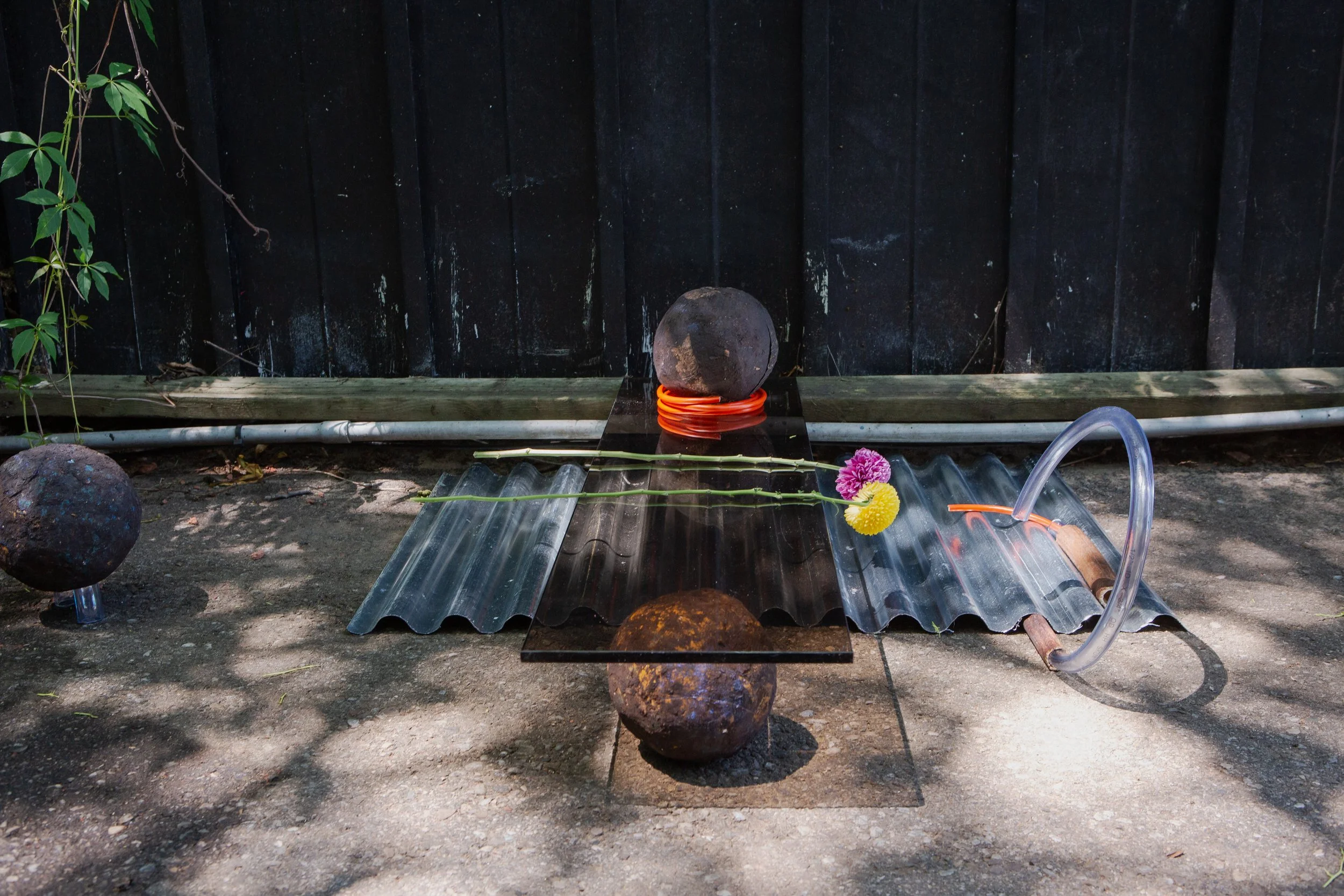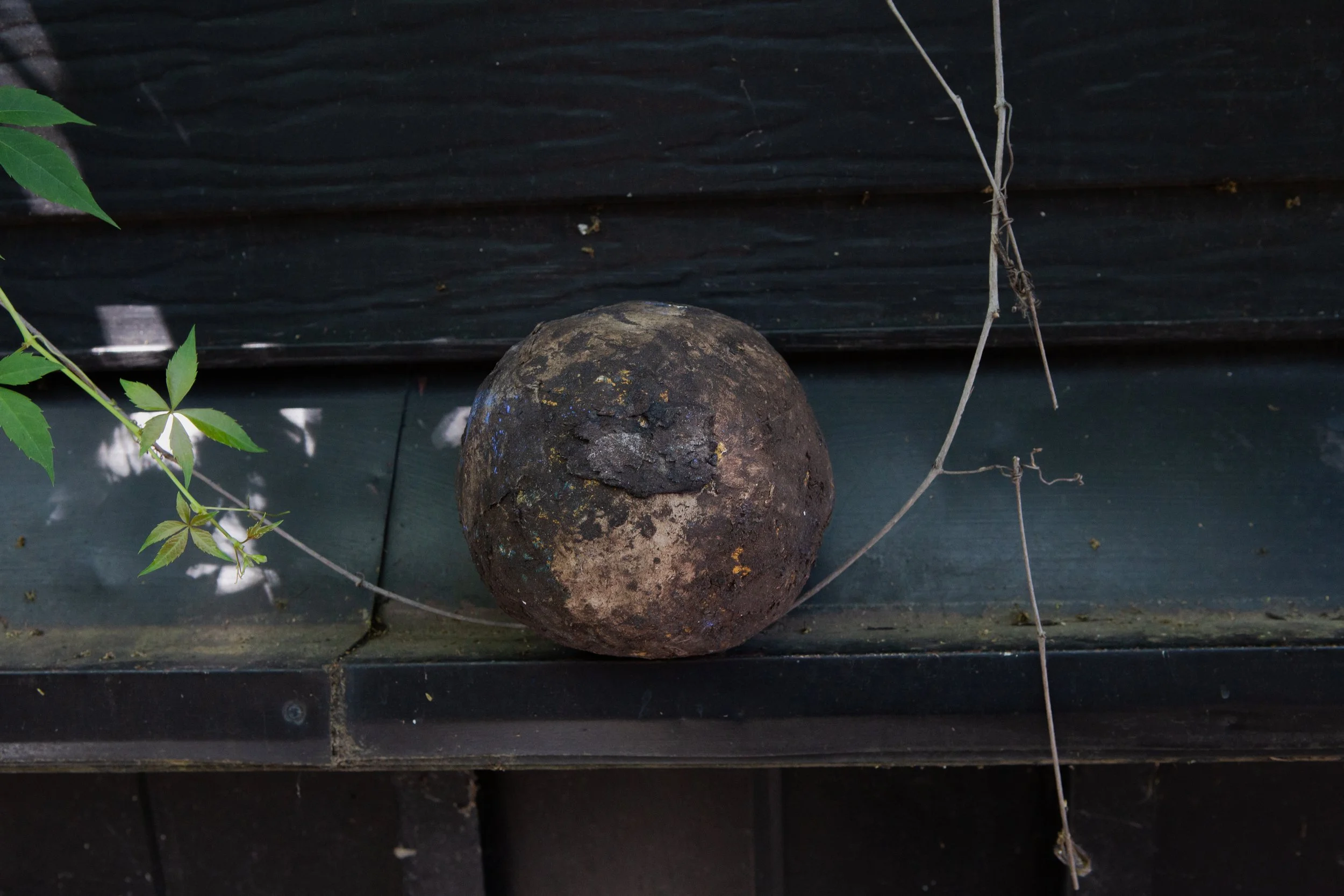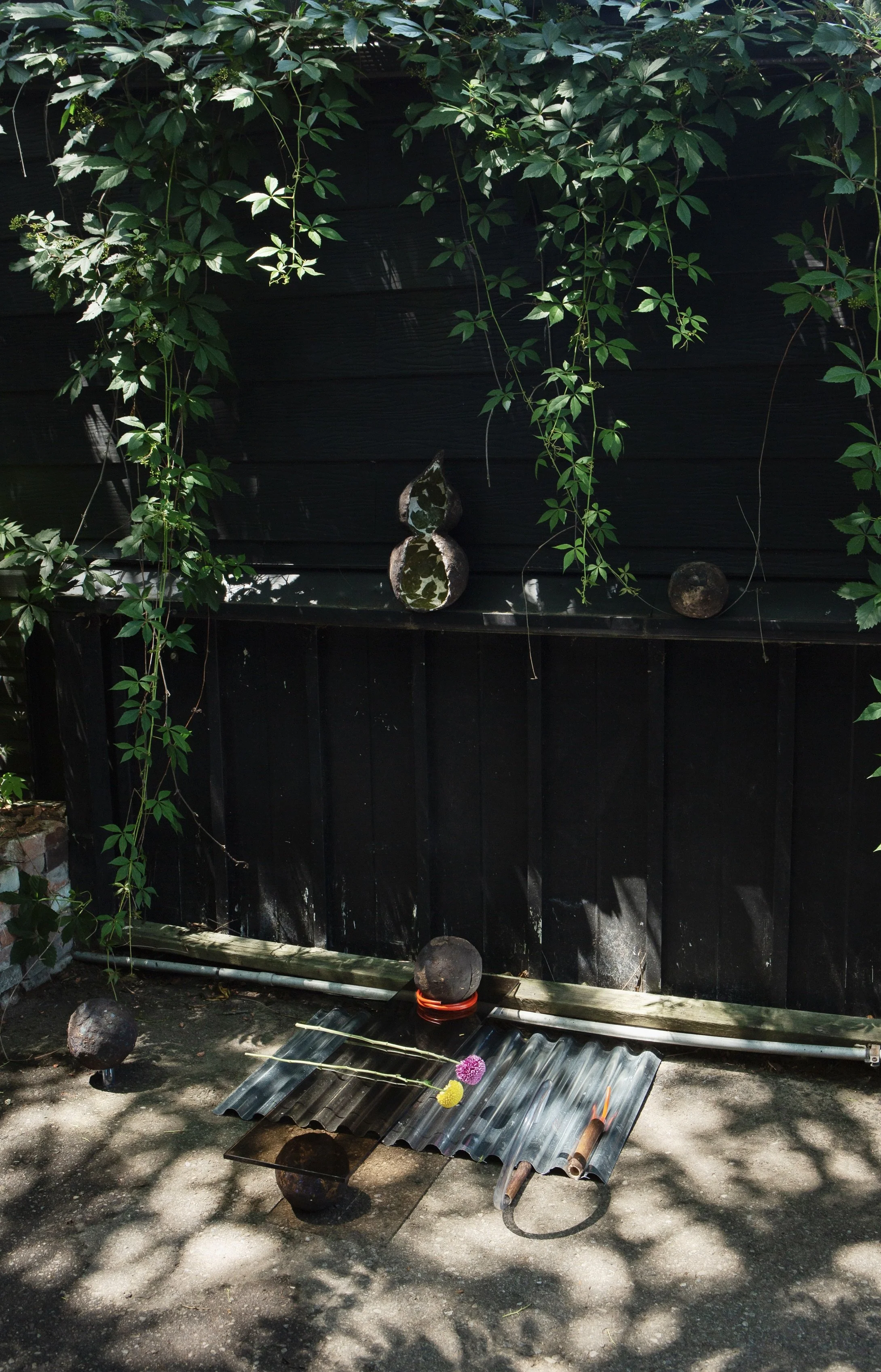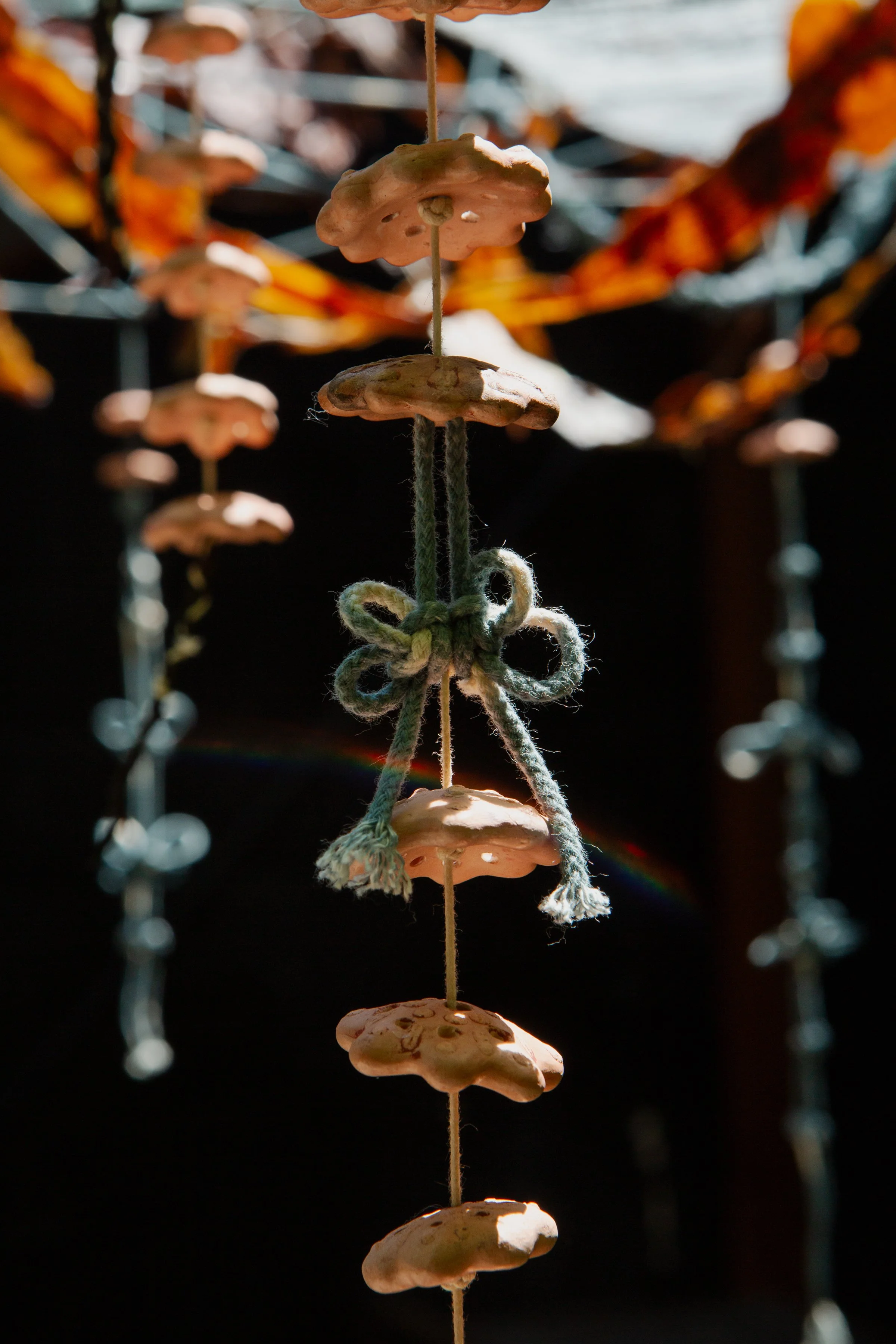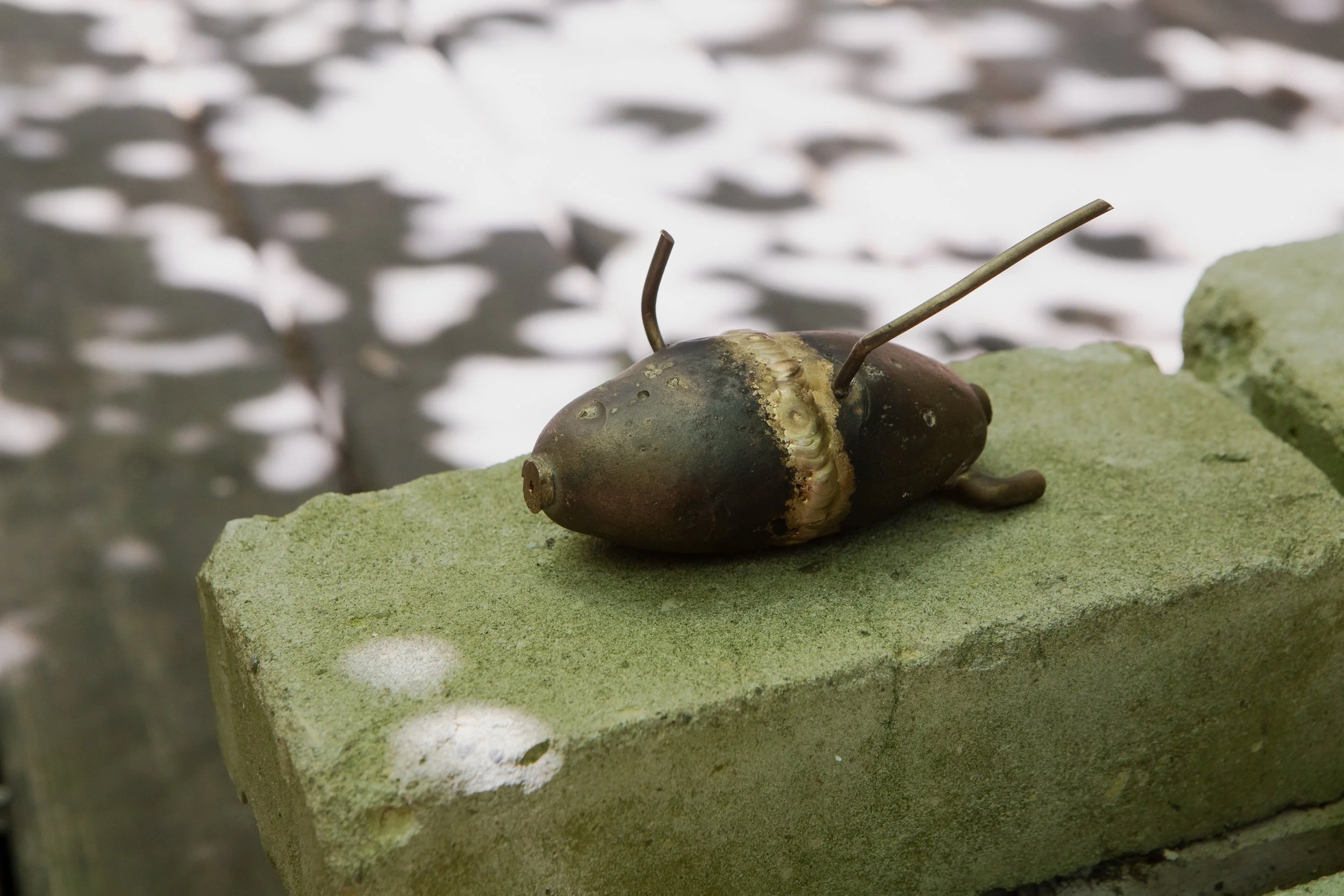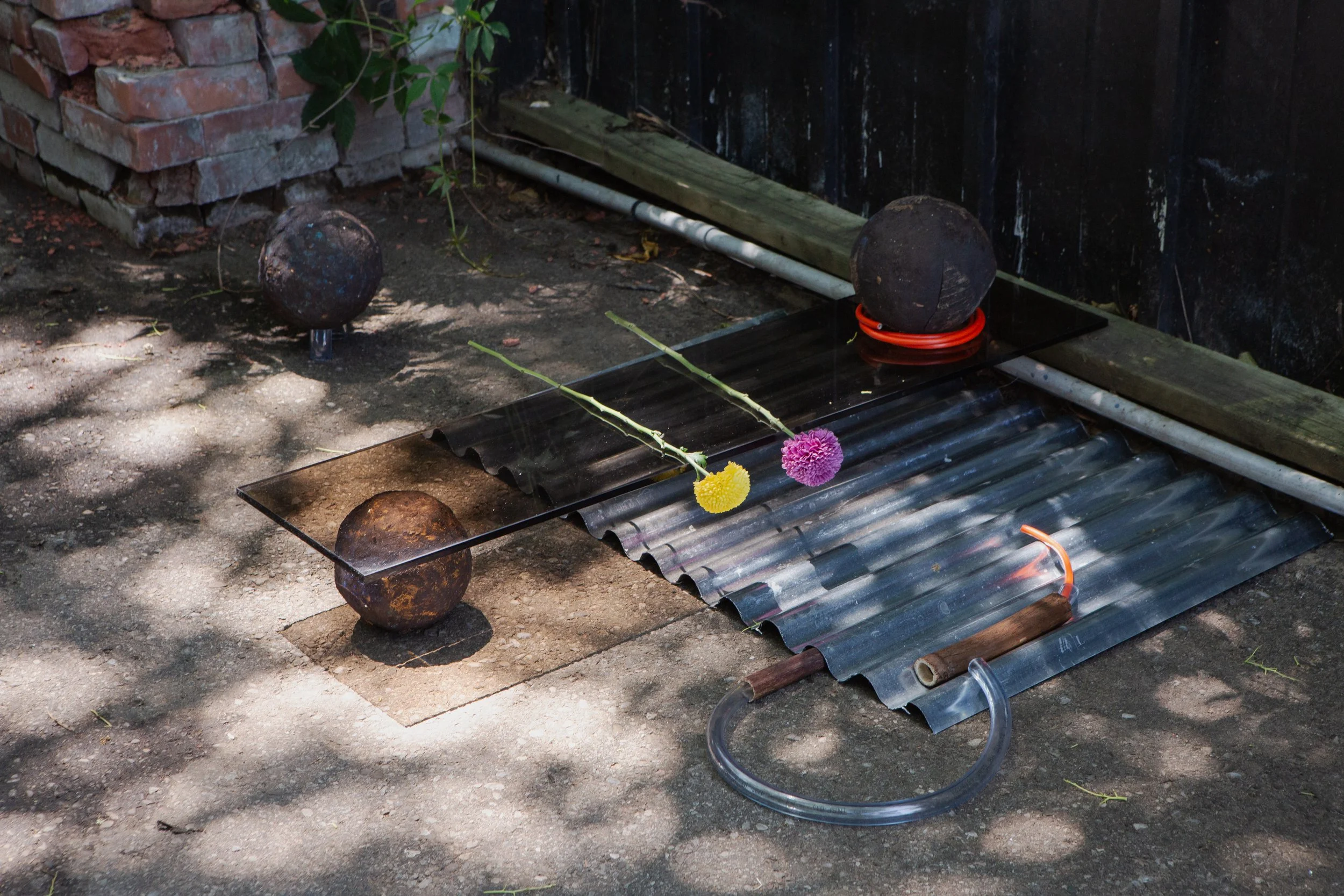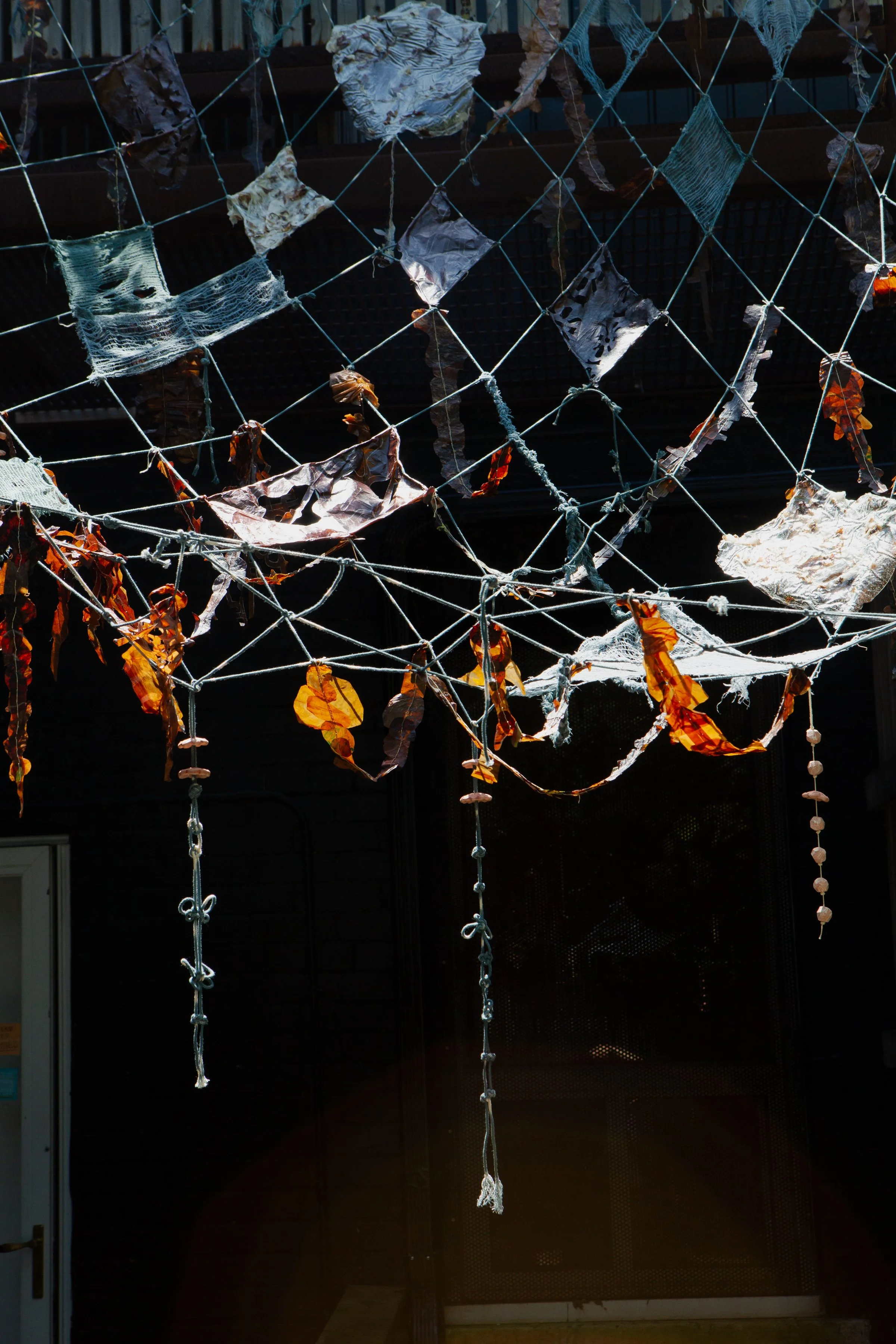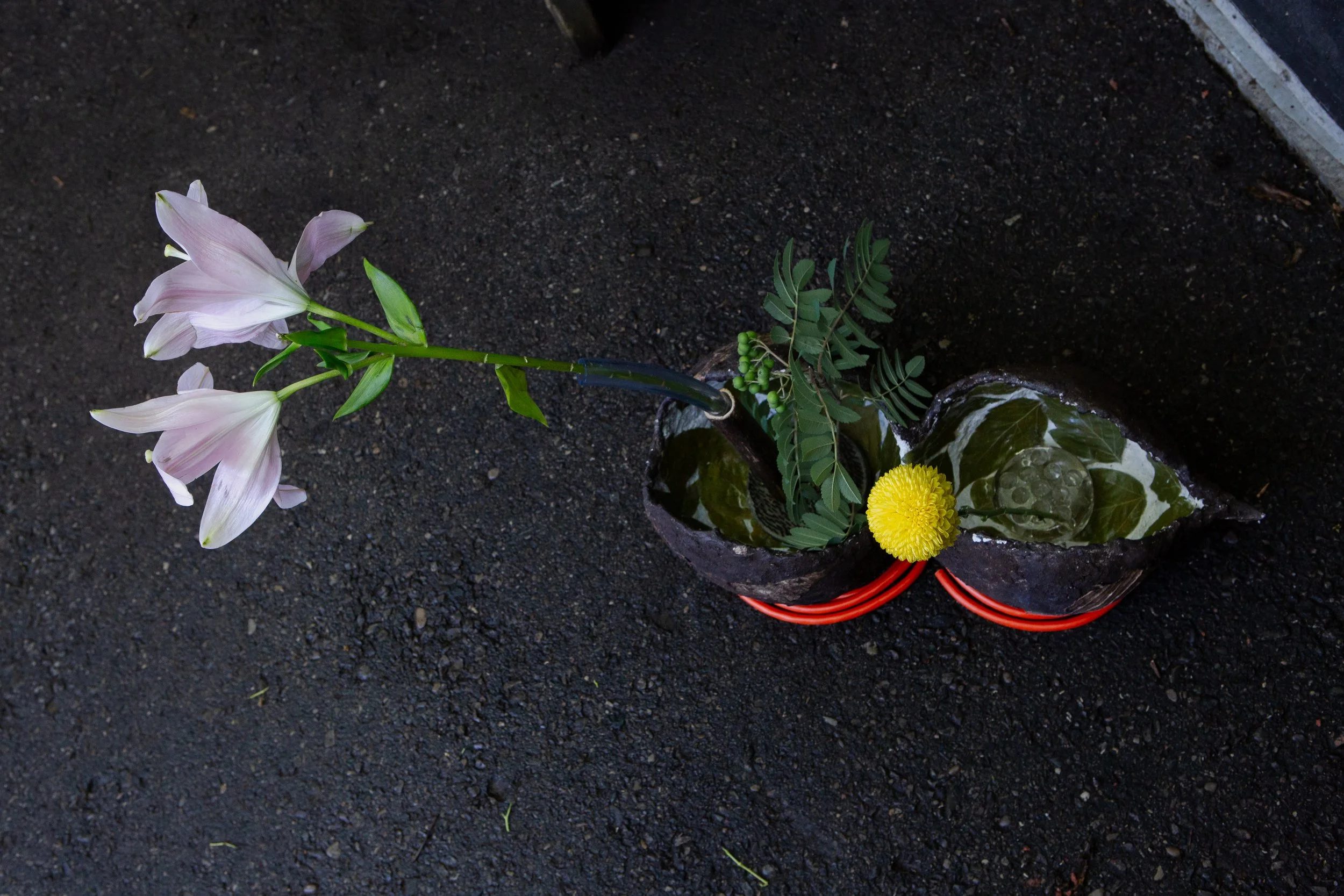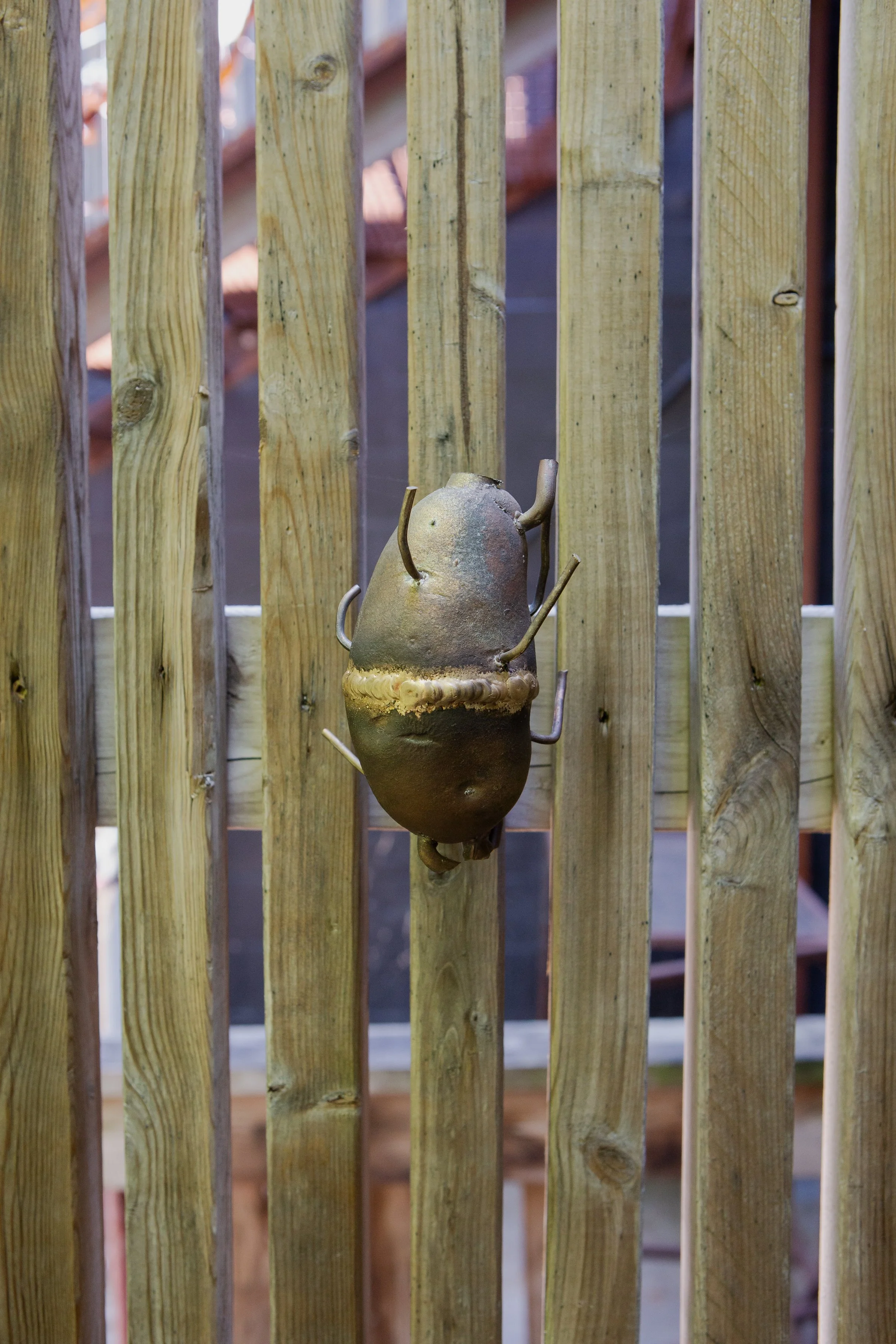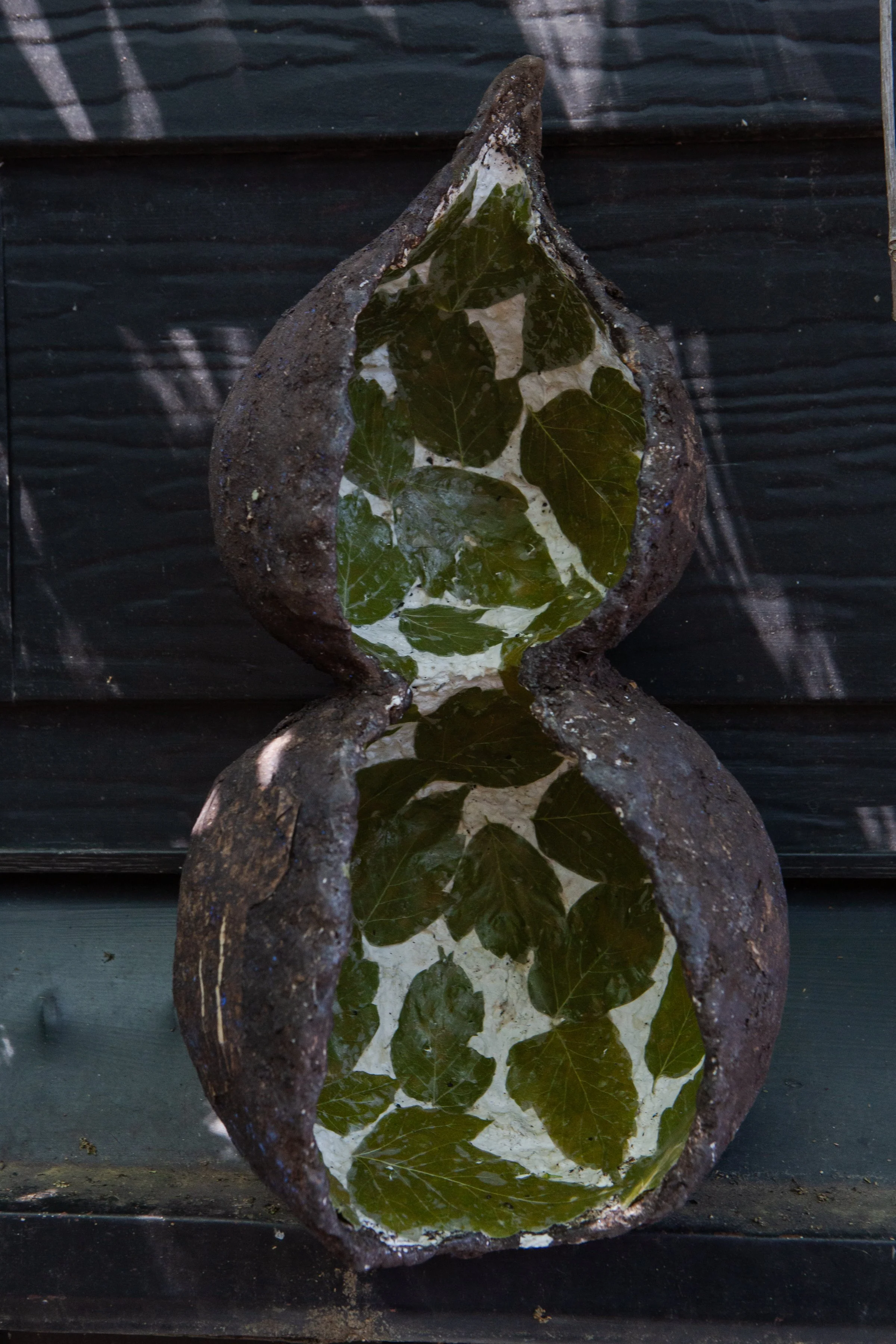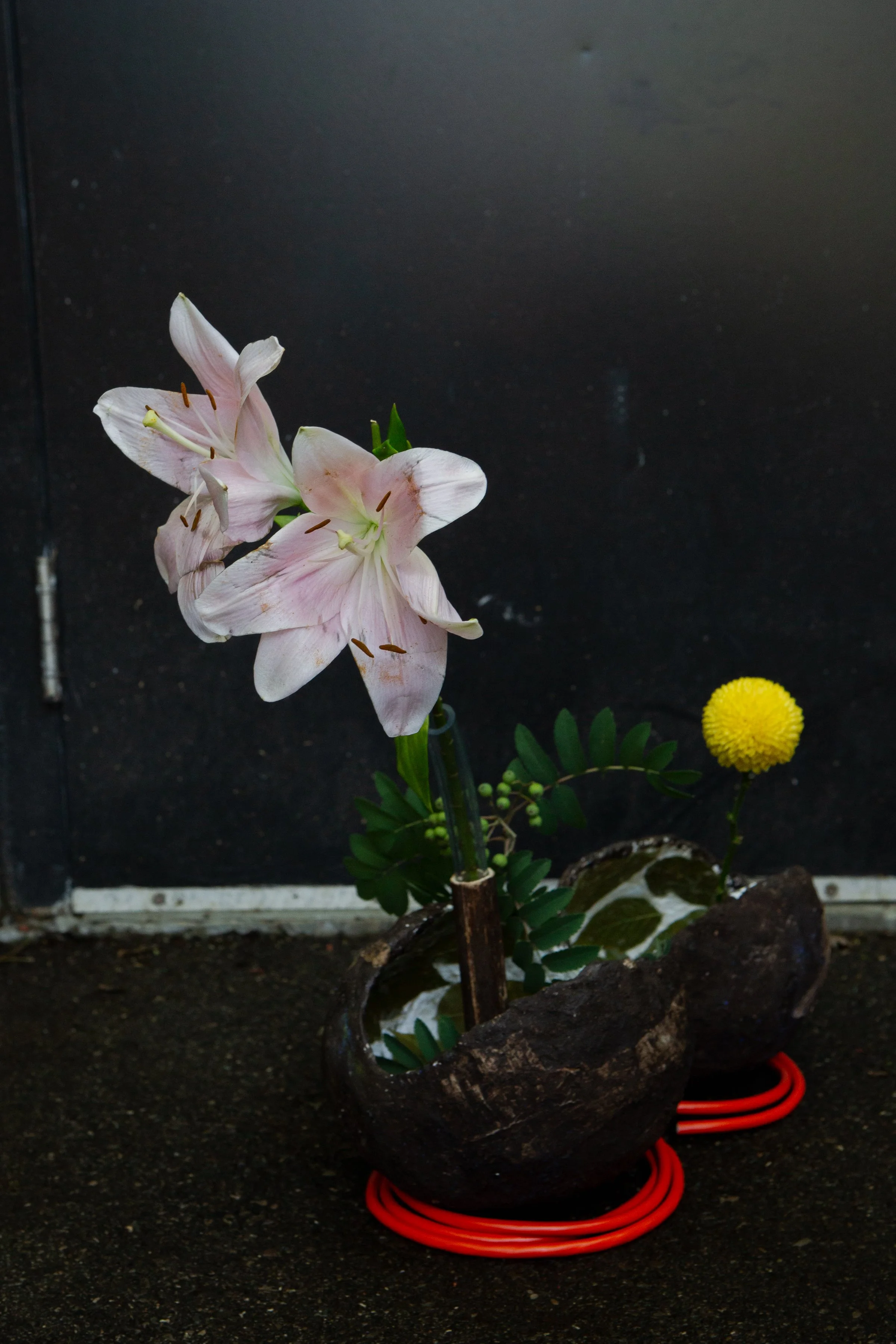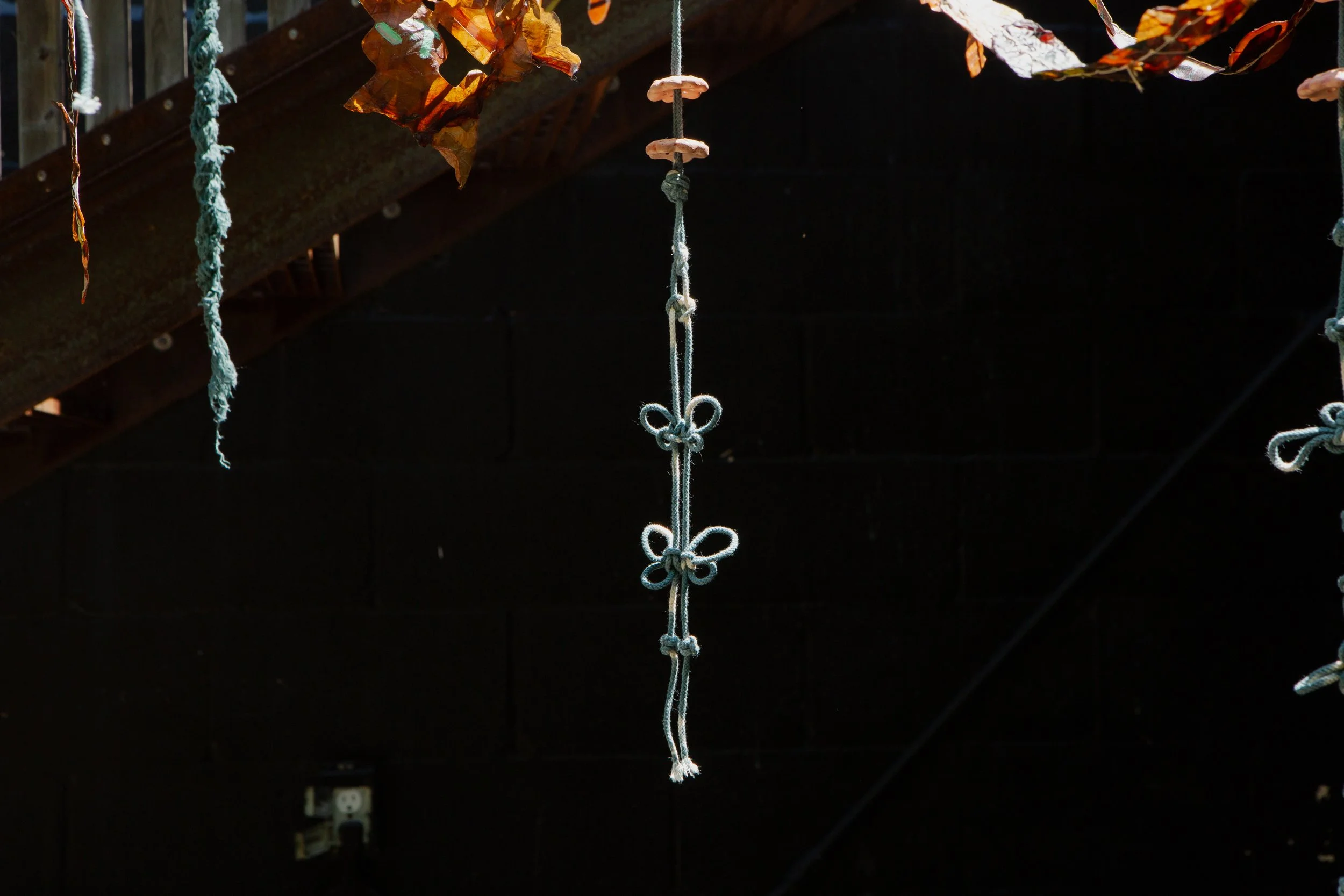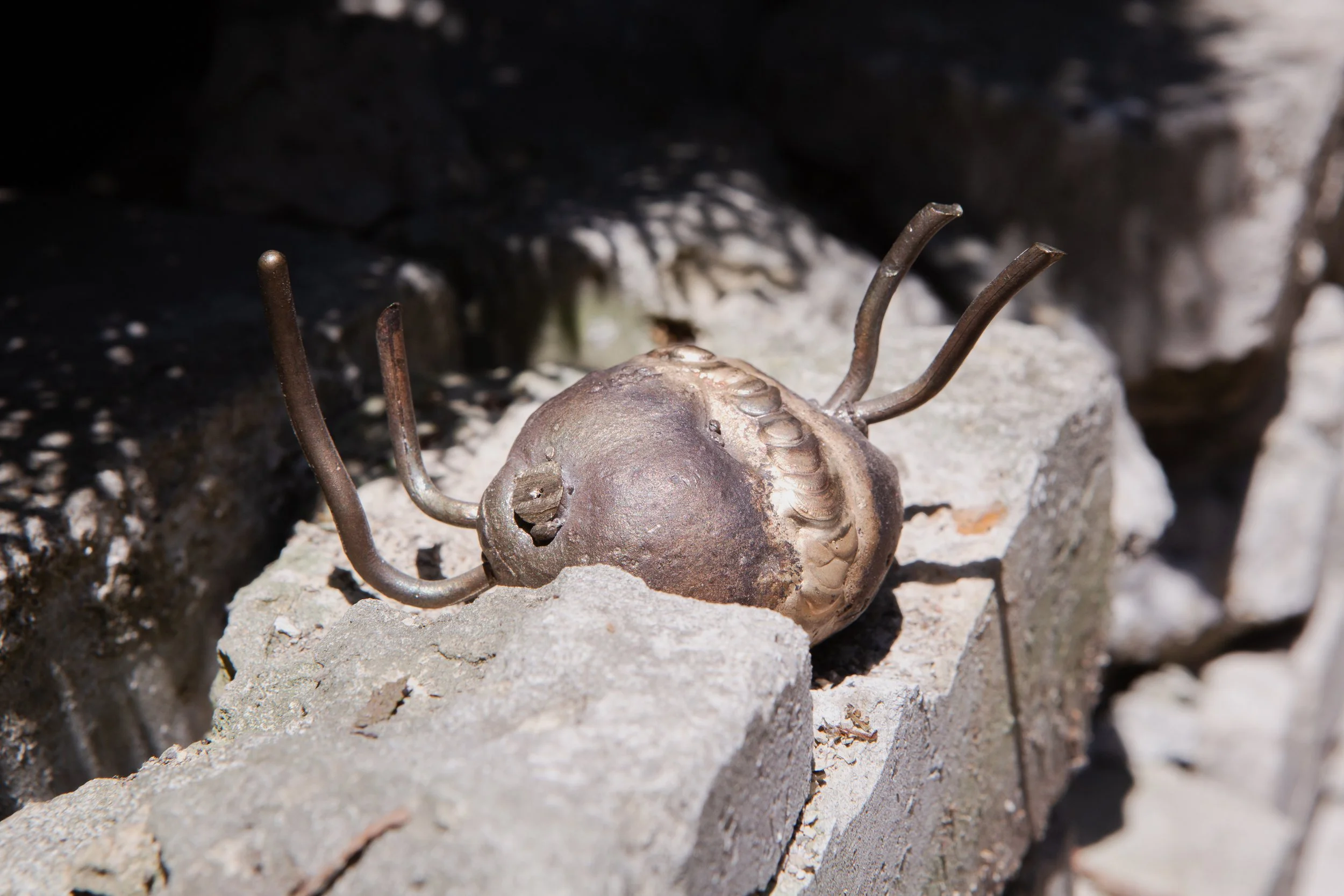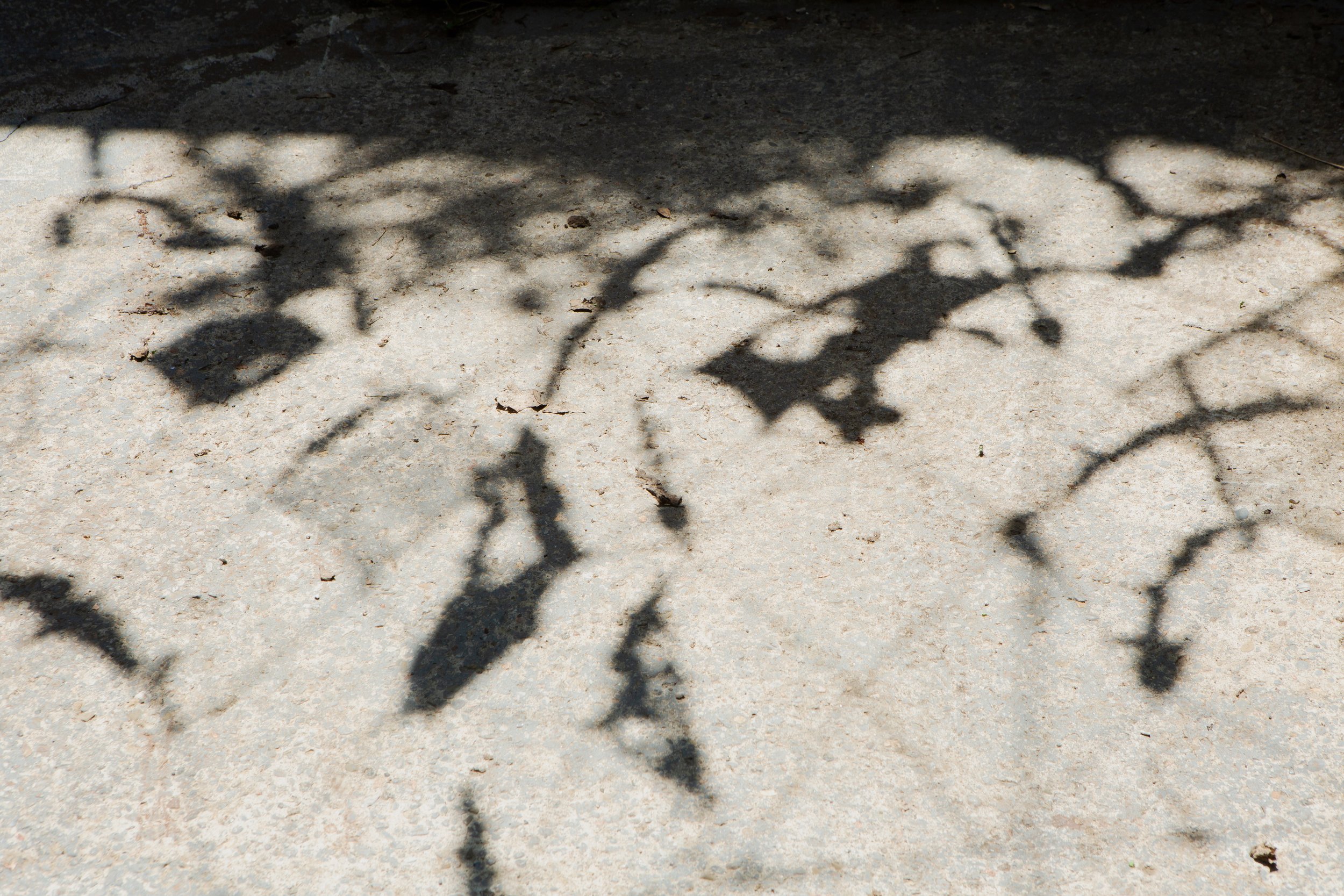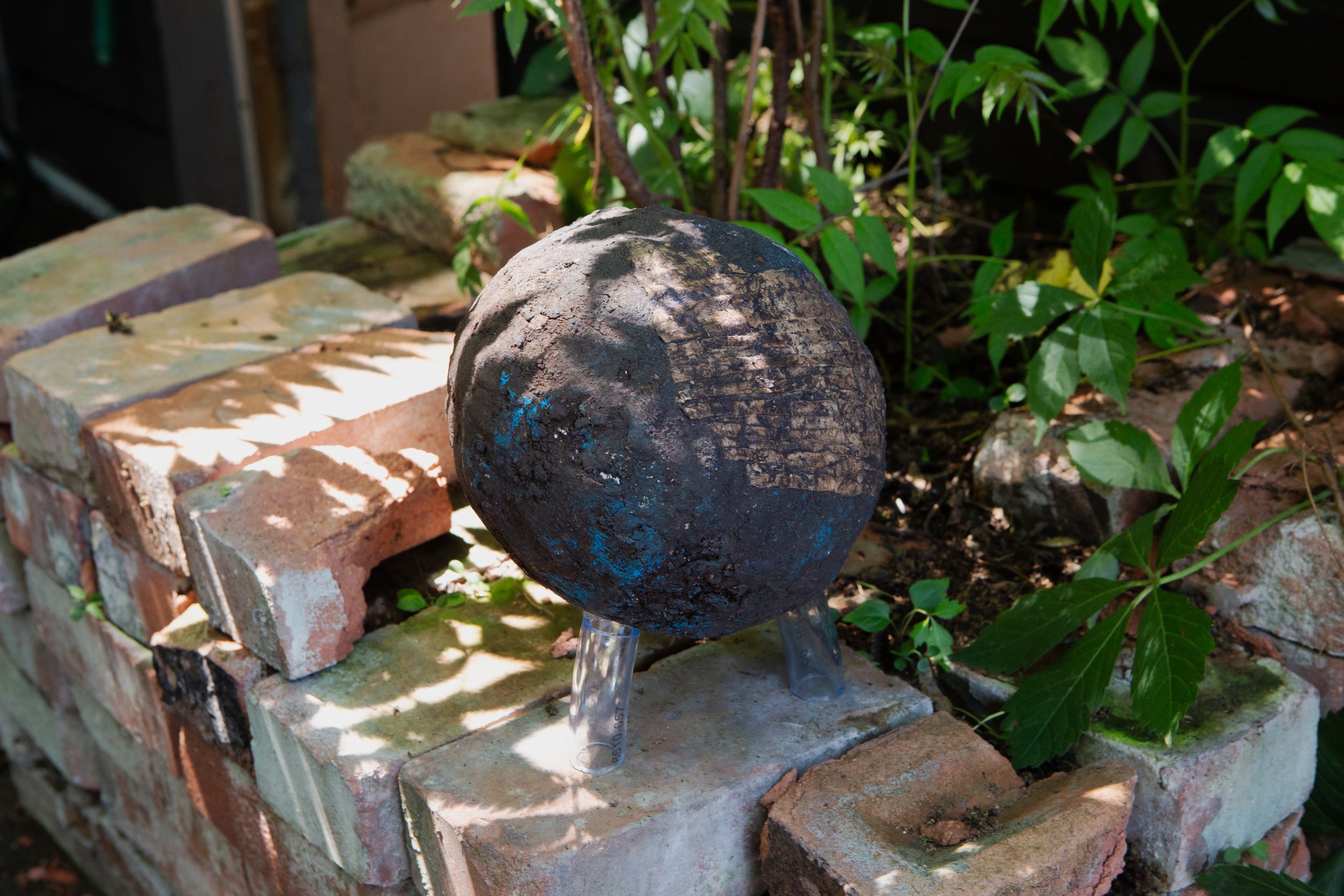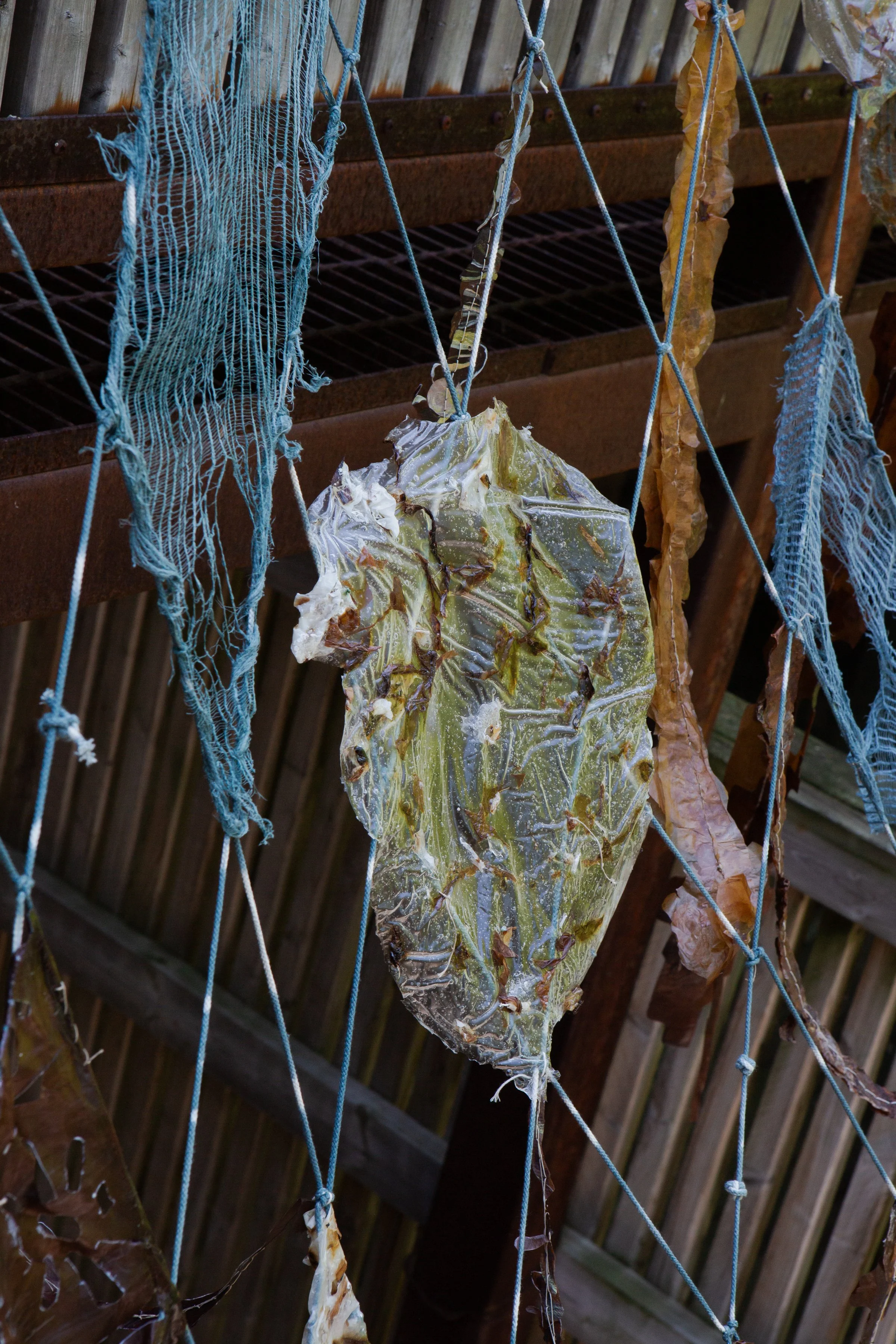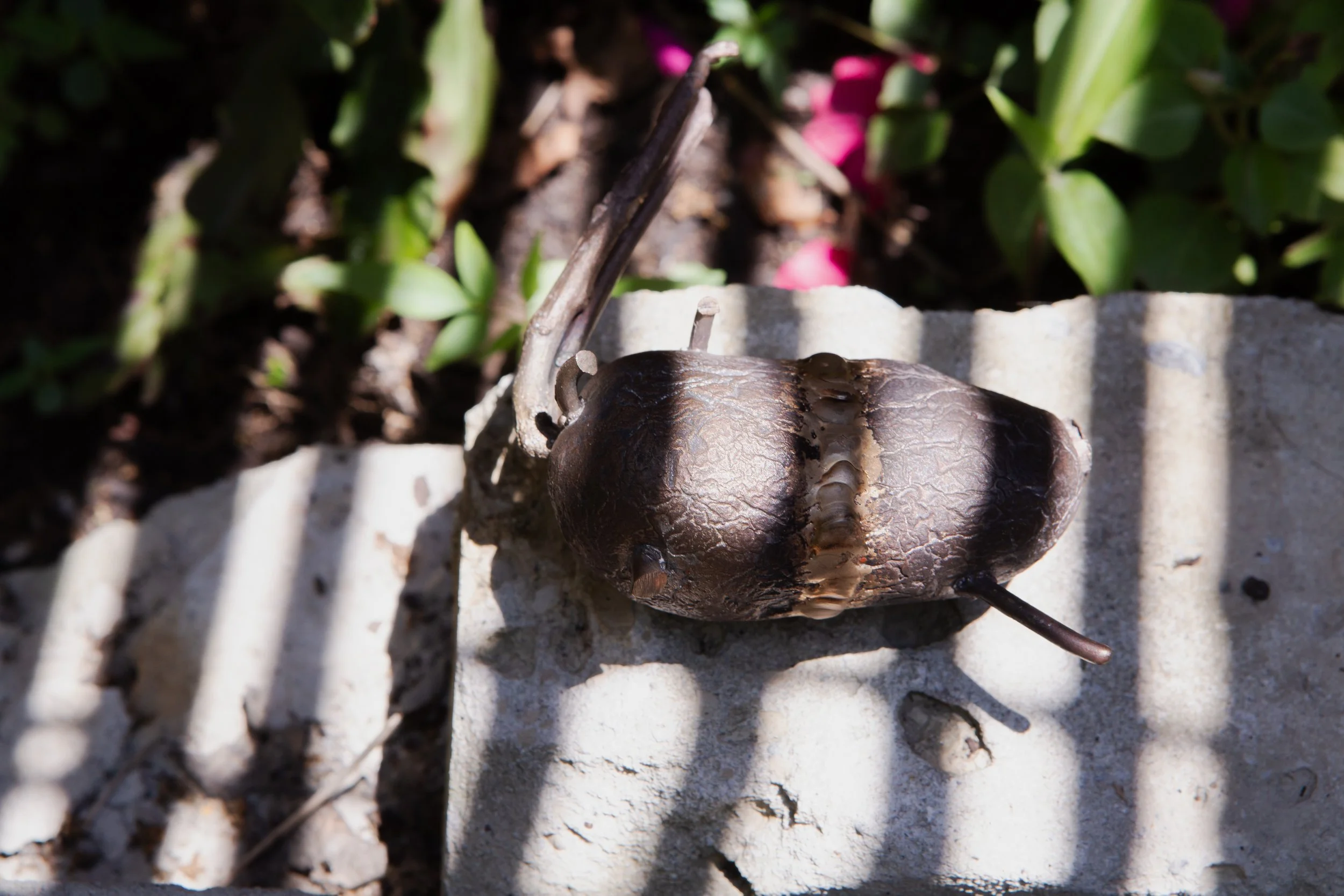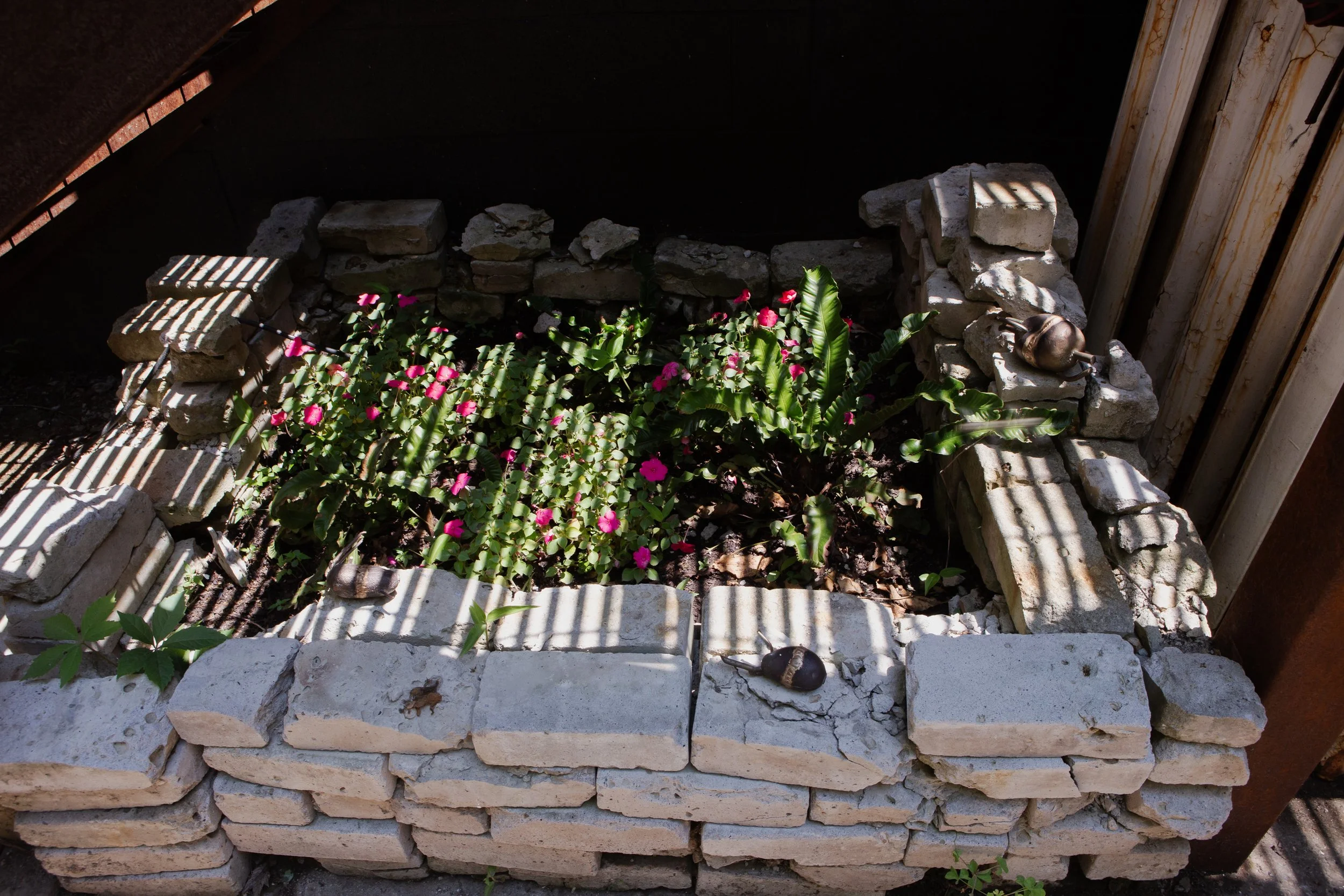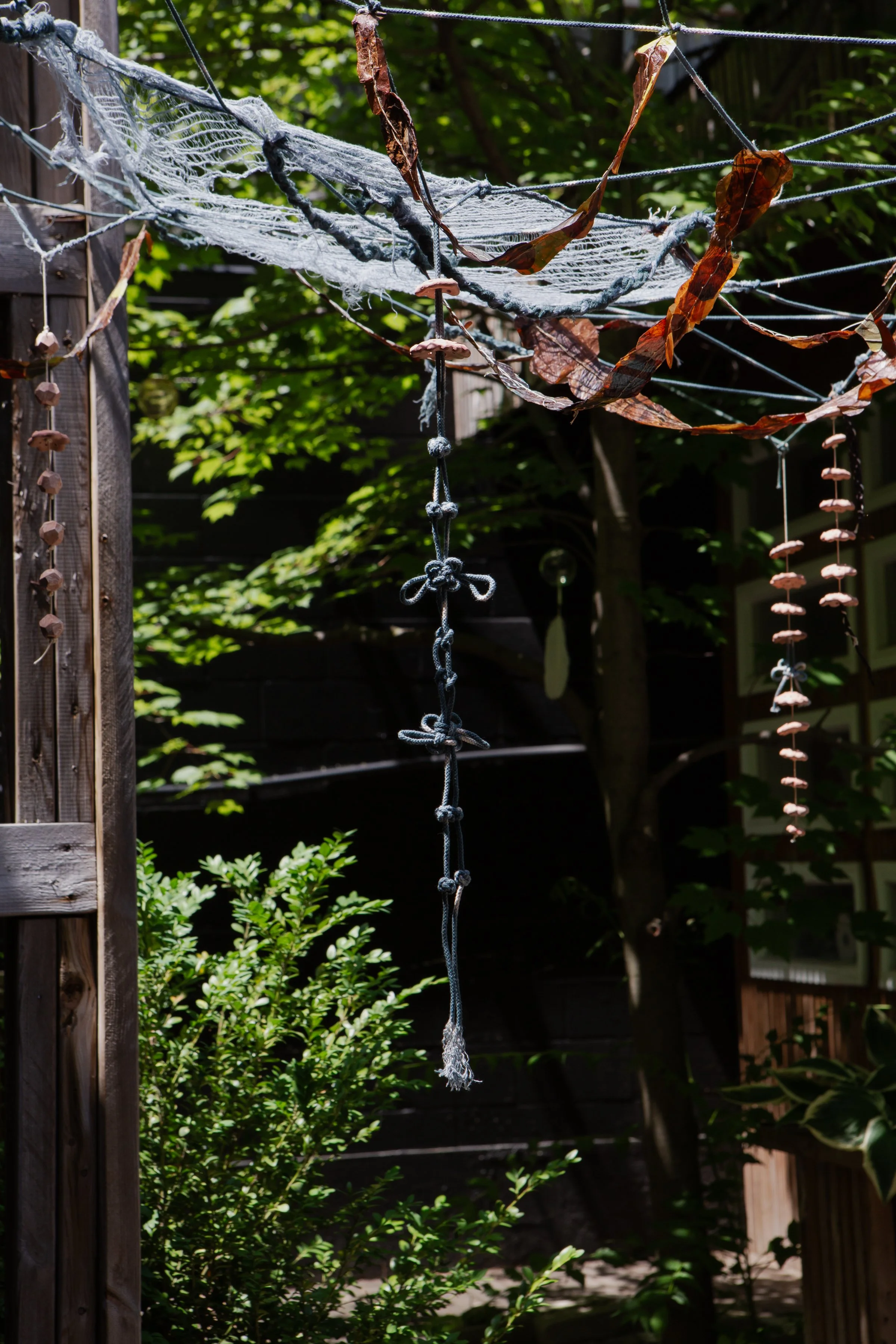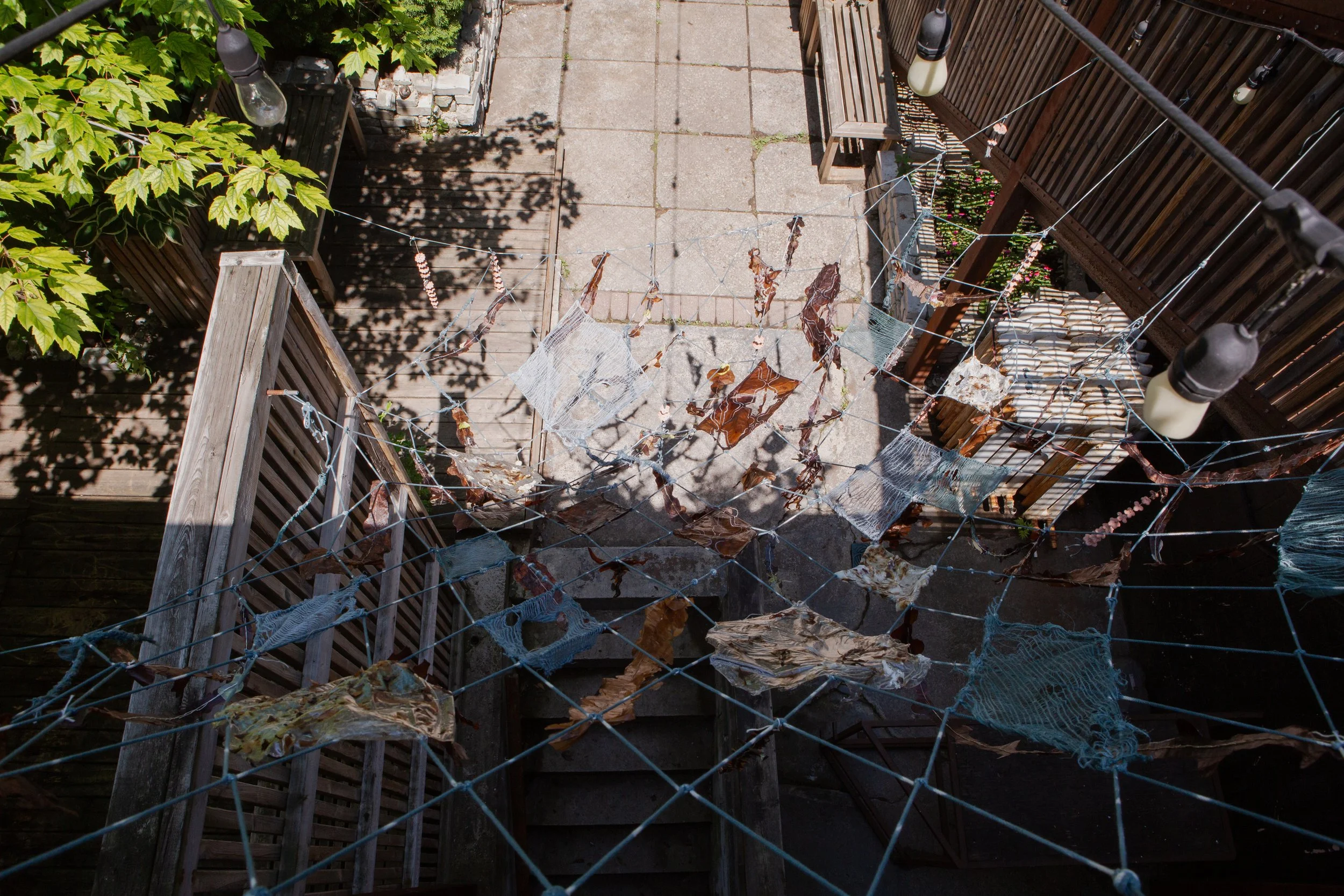Volume V, July 5, 2025
Leeay Aikawa, Danan Lake, Joy Wong
Garden Variety Volume V brings together works by Leeay Aikawa, Danan Lake, and Joy Wong that share a focus on reciprocity and transformation—whether ecological, cultural, or personal. Each artist engages organic processes and inherited forms, offering gestures that echo cycles of exchange, decay, and renewal. Installed throughout the garden, the works invite slow looking and sensory attention, attuning viewers to the quiet forces that shape growth and change.
In Leeay Aikawa’s Ikebana Pod, gargantuan, empty seedpods languish. Devoid of their contents, the pods hint at an event that has already occurred. First, there is the firming of the pod, then the ripening of the seed within, followed finally by the splitting open and bursting forth. But Aikawa withholds the rupture itself. Instead, she presents the aftermath—hollow shells—and considers the fullness that came before. Captivated by the teeming seedpods she encountered on walks through the city, Aikawa’s work lingers in the imaginative space between what has happened and what has yet to happen.
Danan Lake’s Cloches de Terre comprises thirteen bronze potatoes, each one unique. Cast during a residency at the Banff Centre for Arts and Creativity, the potatoes were modeled after real ones given to Lake by a farmer in exchange for restoring a handmade banjo—an instrument he had built decades earlier for his daughter. Their exchange took place as wildfires approached Lake’s home community of Argenta, BC. The banjo, retrieved during the evacuation, became a conduit for an unexpected reciprocity. Each potato is hollow-cast with a small piece of bronze sealed inside, producing a faint chime that varies with shape and size. Installed throughout the garden—some nestled in flower beds, others affixed to the wall—the potatoes evoke a quiet resonance between decay and endurance, offering a meditation on exchange, displacement, and the desire to hold something still in the face of loss.
Joy Wong’s Under cover draws on the microbiology of fermentation, where bacterial culture enables growth through a lineage of symbiosis and care. Kombucha—a fermented tea thought to have originated in Northern China—becomes a material and conceptual entry point. Using SCOBY “leather” formed by bacterial cellulose, Wong reflects on how both microbial and cultural inheritances persist even when their origins are obscured. Suspended from the upper railing, an overhanging net made of string, sewn SCOBY, ceramic charms, and starch-based biofilms spans the courtyard. Referencing architectural thresholds—nets, lattices, and grates—it echoes the trailing Virginia Creeper in the garden, while opaque elements cast shifting shadows below. Visitors can view the piece from both above and beneath, moving through a space shaped by adaptation, flux, and softness.
Each work in Garden Variety Volume V engages transformation as something material, embodied, and ongoing—emerging through fermentation, rupture, repair, and exchange. Whether suspended, scattered, or sewn, these gestures mark specific entanglements between living forms and the forces that shape them. By positioning reciprocity as a natural process—one that, like decay or growth, sustains life when in balance—the exhibition draws attention to the quiet exchanges that allow things to take root, break down, and begin again.
Documentation by Clea Christakos-Gee


